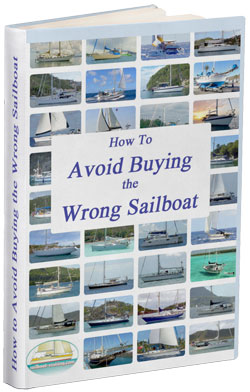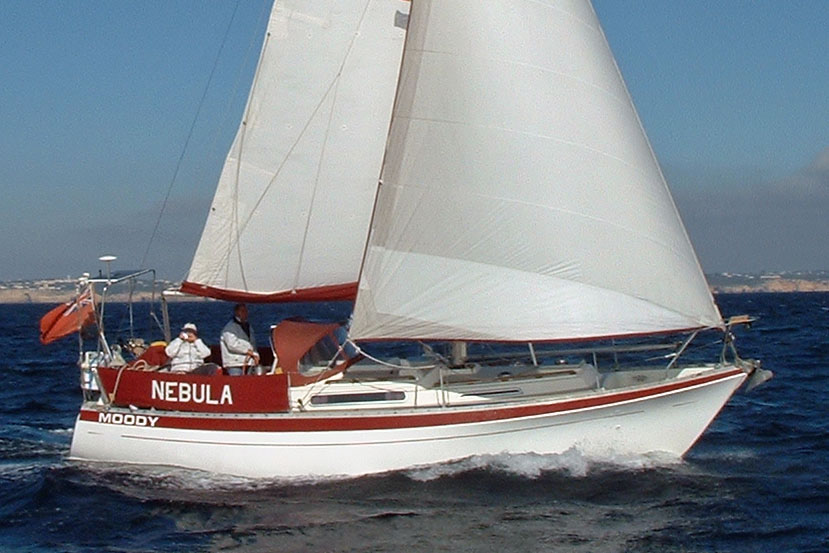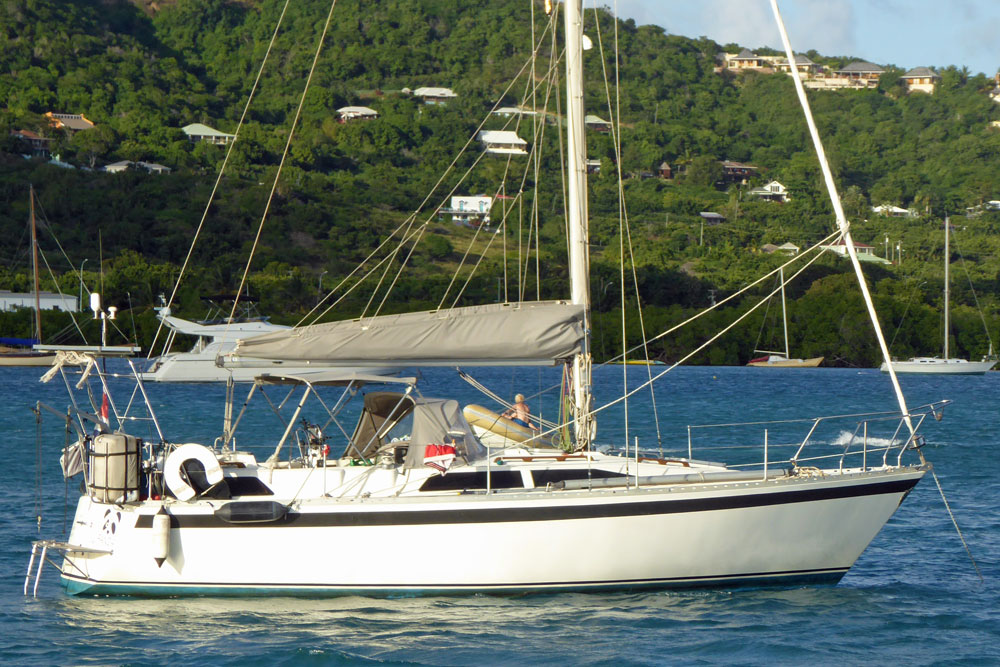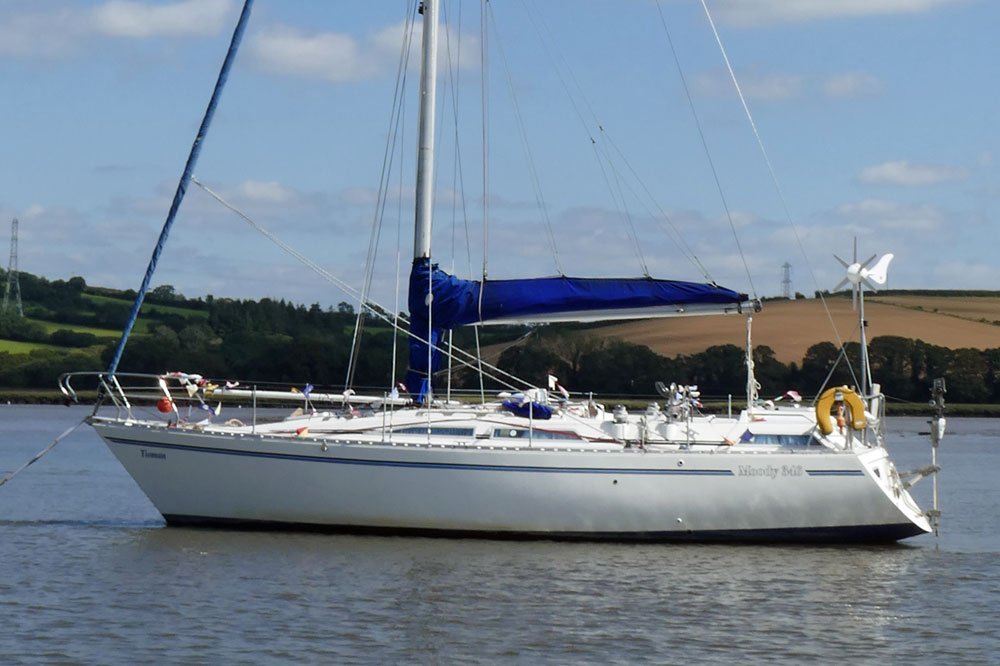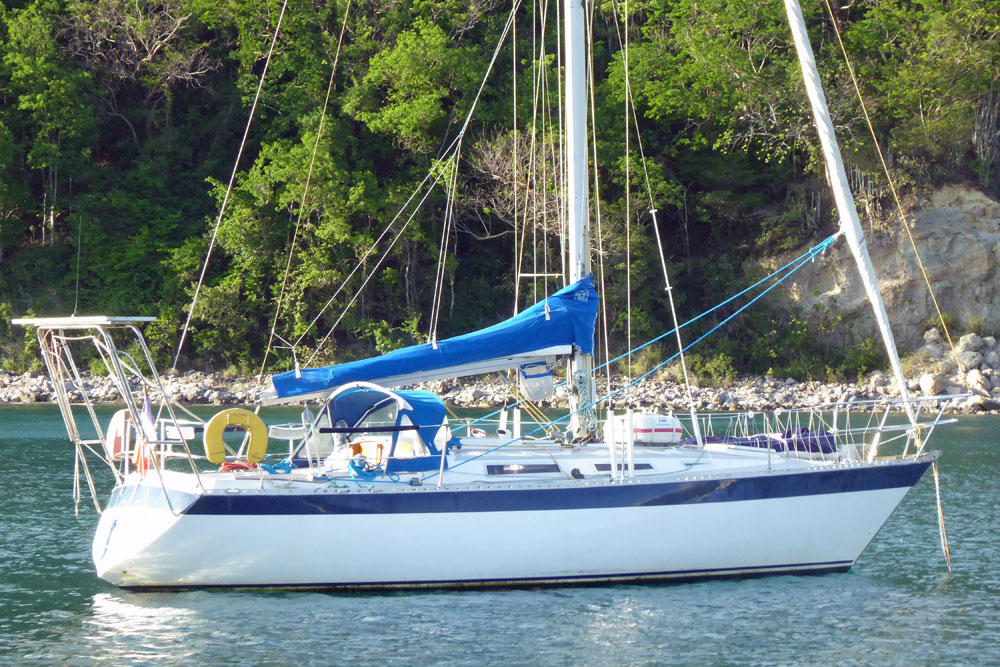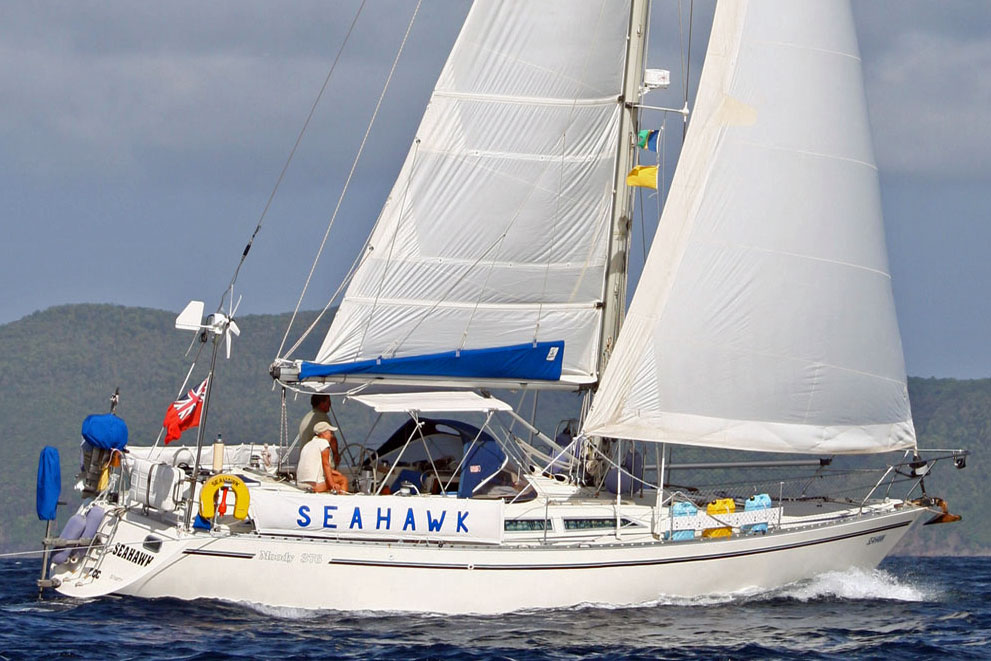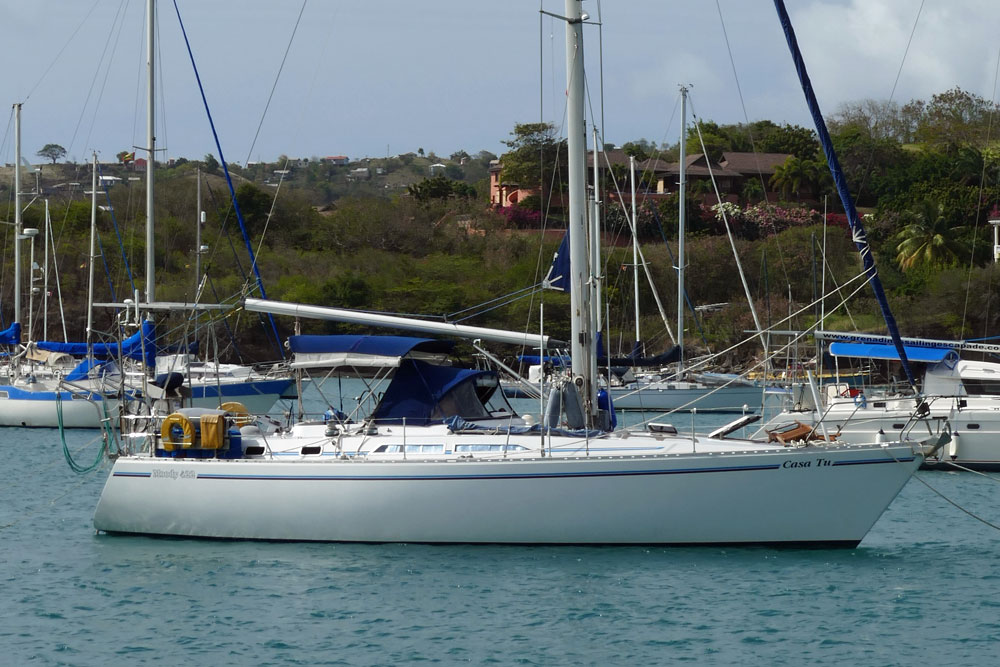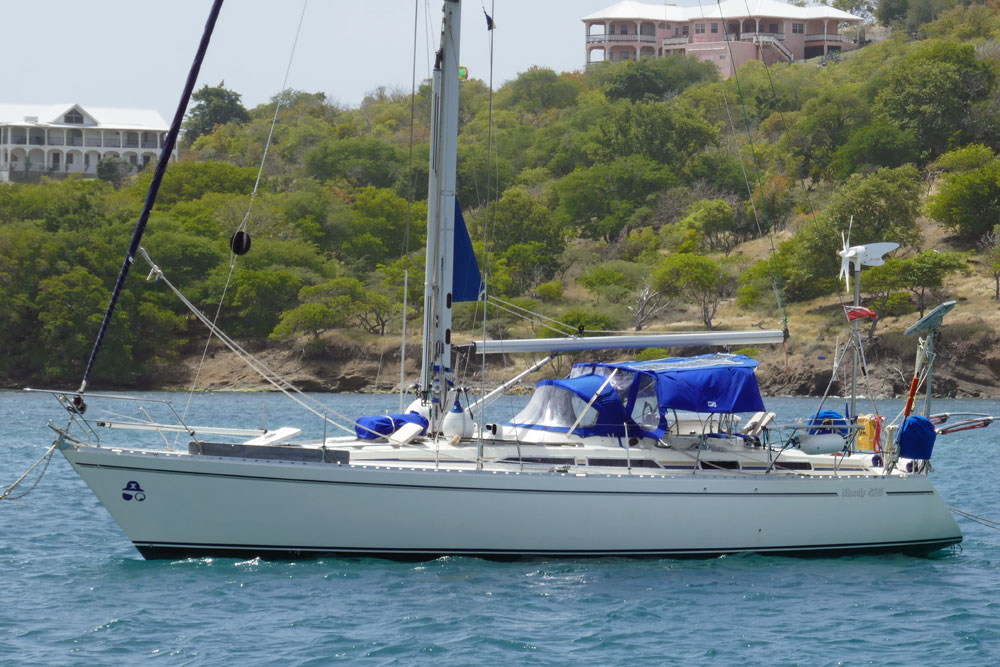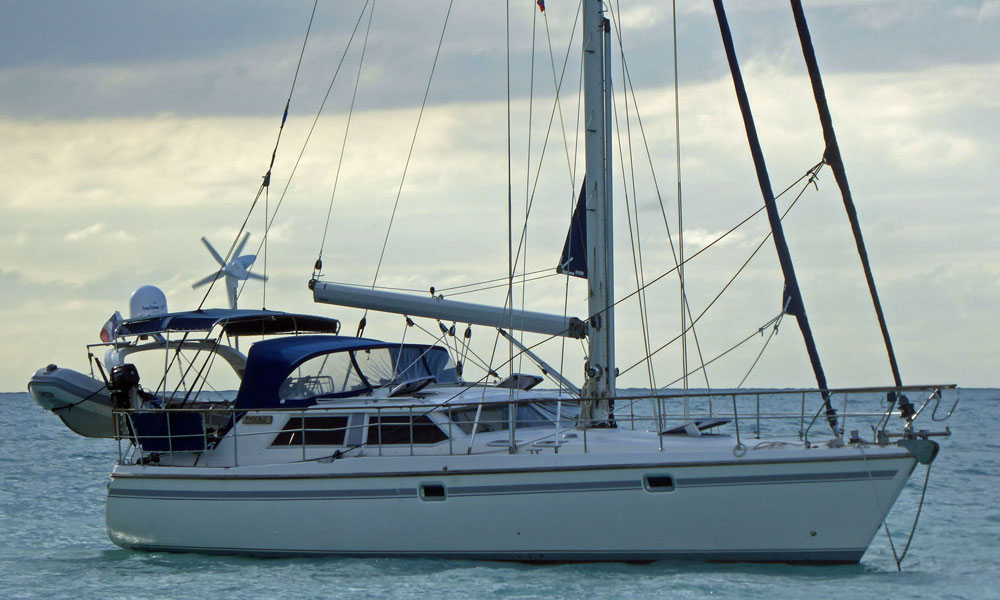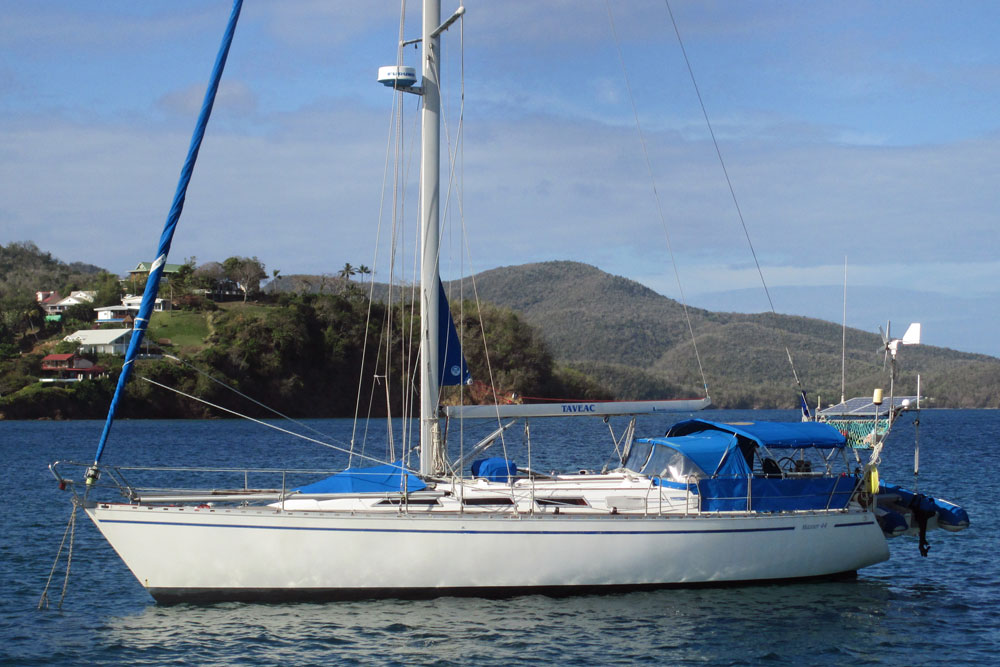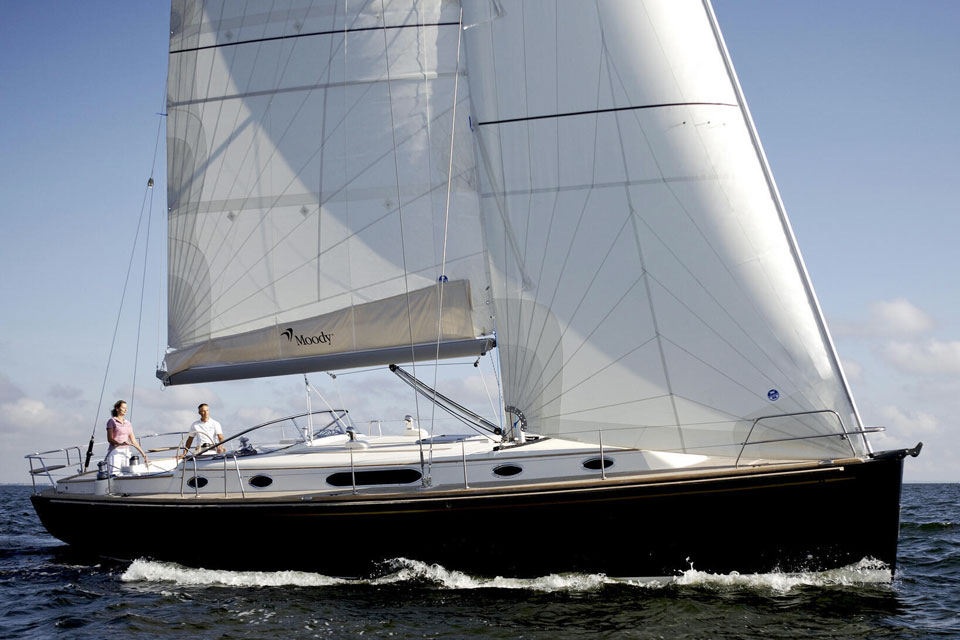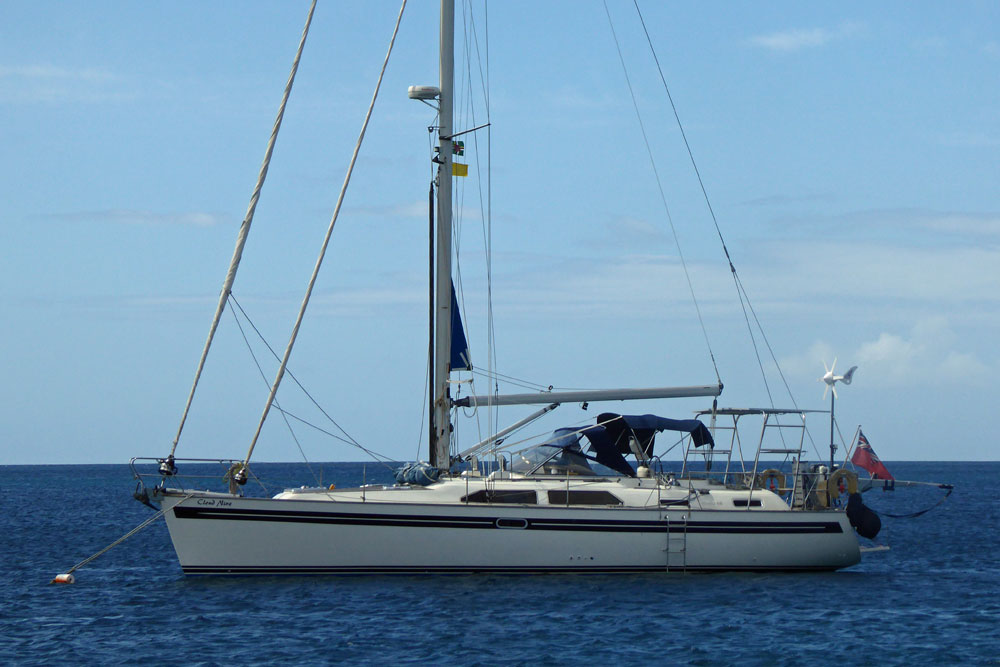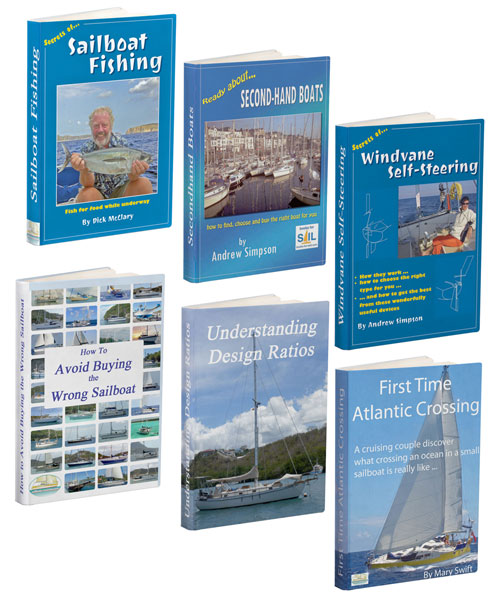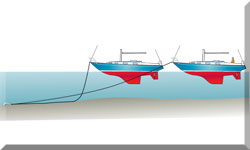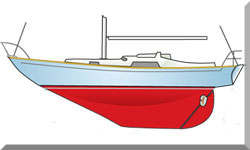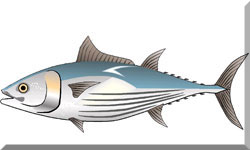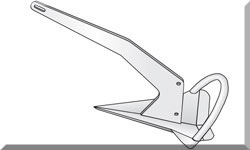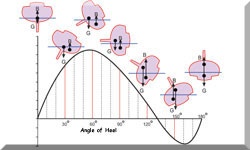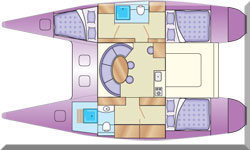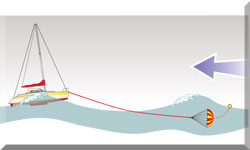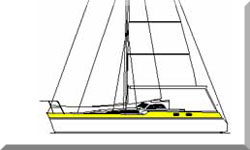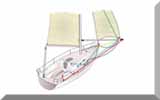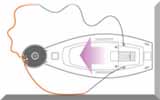- Home
- Cruising Yachts 40' to 45'
- Moody 41
The Moody 41 Classic Sailboat
Specs & Key Performance Indicators
The Moody 41 Classic, a moderate displacement fractional sloop, was designed by Bill Dixon and built in the UK by A. H. Moody & Son Ltd.
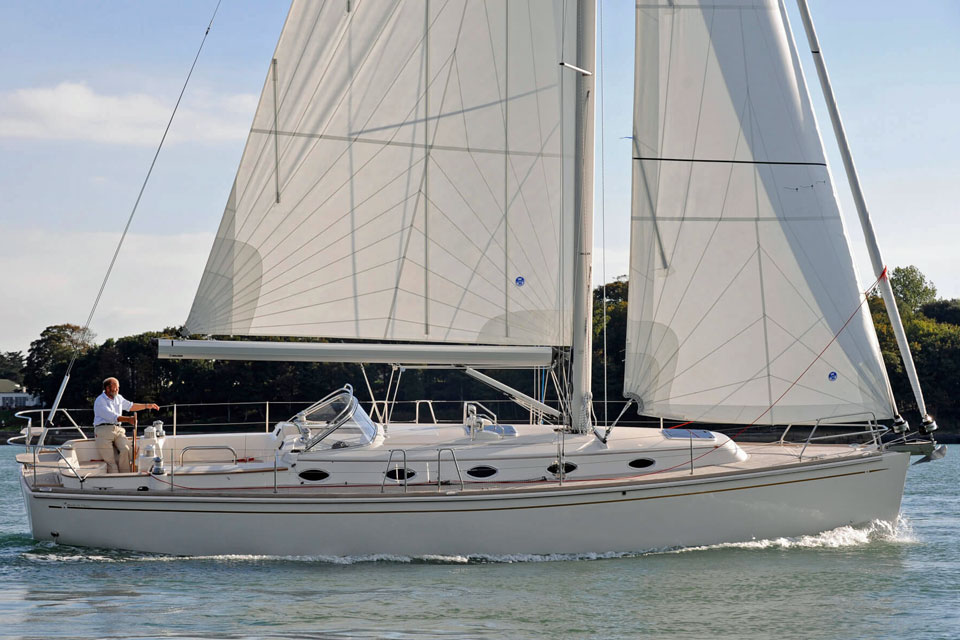 A Moody 41 Classic sporting a self-tacking jib and a Solent Rig
A Moody 41 Classic sporting a self-tacking jib and a Solent RigPublished Specification for the Moody 41 Classic
Underwater Profile: Bulb fin L-shaped keel & spade rudder
Hull Material: GRP (Fibreglass)
Length Overall: 41'8" (12.7m)
Waterline Length: 39'9" (xm)
Beam: 13'2" (4.0m)
Draft: 6'6" (2.0m)*
Rig Type: Solent-Rigged fractional sloop
Displacement: 21,605lb (9,800kg)
Ballast: 6,063lb (2,705kg)
Designer: Bill Dixon
Builder: A. H. Moody & Son Ltd (UK)
Year First Built: 2009
* A shoal draft option is available drawing 5'4" (1.65m)
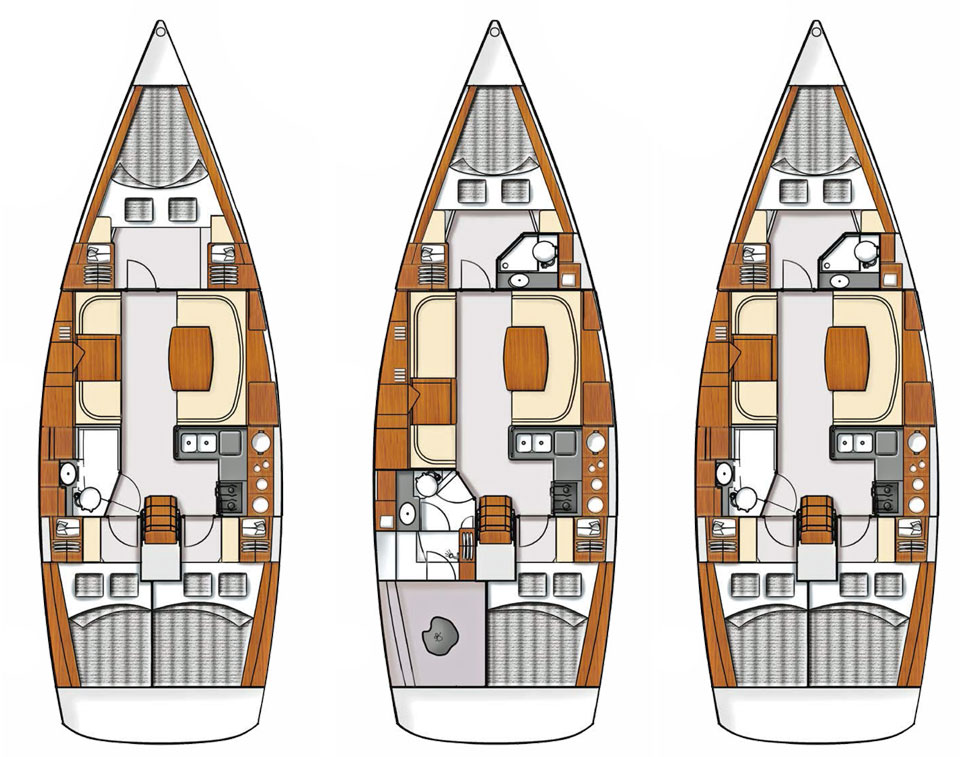 Interior layout options for the Moody 41 Classic sailboat
Interior layout options for the Moody 41 Classic sailboatRead more about the latest sailboats in the Moody range...
Published Design Ratios for the Moody 41 Classic
1. Sail Area/Displacement Ratio: 20.6
2. Ballast/Displacement Ratio: 28.1
3. Displacement/Length Ratio: 211
4. Comfort Ratio: 28.9
5. Capsize Screening Formula: 1.9
Summary Analysis of the Design Ratios for the Moody 41 Classic
The Moody 41 sailboat, based on its design ratios, presents a balanced performance profile for both cruising and racing enthusiasts.
- The Sail Area/Displacement Ratio (SA/D) of 20.6 indicates that the Moody 41 is a moderately powered boat. This ratio reflects the amount of sail area relative to the boat's displaced volume. A higher SA/D ratio generally means a faster, more performance-oriented boat, while a lower ratio indicates a more conservative, cruising-oriented design. With a SA/D of 20.62, the Moody 41 is expected to perform well in a variety of wind conditions, providing a balance between speed and stability.
- The Ballast/Displacement Ratio (B/D) of 28.1 suggests that the Moody 41 has a moderate level of stability. This ratio is a measure of the boat's stability, with higher values indicating a more stable boat. The Moody 41's B/D ratio suggests that it can handle a variety of sea conditions and should be stable under most circumstances.
- The Displacement/Length Ratio (D/L) of 211 indicates that the Moody 41 is a moderately heavy boat. This ratio is a measure of the boat's speed potential, with lower values indicating faster boats. The Moody 41's D/L ratio suggests that it is not designed for high-speed performance, but rather for comfortable cruising at moderate speeds.
- The Comfort Ratio (CR) of 28.9 suggests that the Moody 41 is a comfortable cruising boat. This ratio measures a boat's motion comfort, with higher values indicating more comfort in a seaway. The Moody 41's CR suggests it would provide a comfortable ride in a wide range of sea conditions.
- Lastly, the Capsize Screening Formula (CSF) of 1.9 suggests that the Moody 41 has a good level of safety in the event of a capsize. This ratio is used to predict a boat's capsize resistance, with values below 2 considered relatively safe for offshore sailing. The Moody 41's CSF suggests that it would be a safe choice for offshore cruising.
The Moody 41 Classic: An Overview
The Moody 41 Classic - also refered to as the Moody 41AC (Aft Cockpit) - is a remarkable sailing yacht that effortlessly blends traditional design with modern performance. This vessel is known for its unique blend of classic lines and contemporary sailing capabilities.
The Moody 41 Classic is designed for optimal performance under a variety of sailing conditions. Its moderate sail area to displacement ratio suggests it has a good balance of speed and power, making it a versatile choice for both leisurely cruising and more intense racing.
The Moody 41 Classic also prioritizes stability and safety. The moderate ballast to displacement ratio suggests that the vessel has a good level of stability, capable of handling a range of sea conditions. Additionally, its capsize screening formula value indicates that it has a strong level of safety in the event of a capsize, making it a suitable choice for offshore sailing.
Comfort is another key aspect of the Moody 41 Classic design. Its comfort ratio suggests that it provides a smooth and comfortable ride in various sea conditions. This makes it an excellent choice for long cruises and extensive sea voyages.
The interior of the Moody 41 Classic is typically crafted with attention to detail, providing a luxurious and comfortable environment. While the exact layout can vary, it is common to find two or three cabins, one or two bathrooms, and a fully equipped galley in this size of yacht. The design maximizes the use of space, ensuring passengers have all the facilities needed for a comfortable journey.
In conclusion, the Moody 41 Classic is a testament to skilled yacht design, offering a unique blend of classic aesthetics and modern sailing performance. Whether you're a cruising enthusiast or a seasoned racer, this vessel is designed to deliver a satisfying and comfortable sailing experience.
.........................
I wrote this article using GPT-4, OpenAI’s large-scale language-generation model, as a research assistant to gather information, summarize research findings, and provide suggestions for the content and structure of the article.
Dick McClary, creator and owner of sailboat-cruising.com
.........................
Other sailboats in the Moody range include:
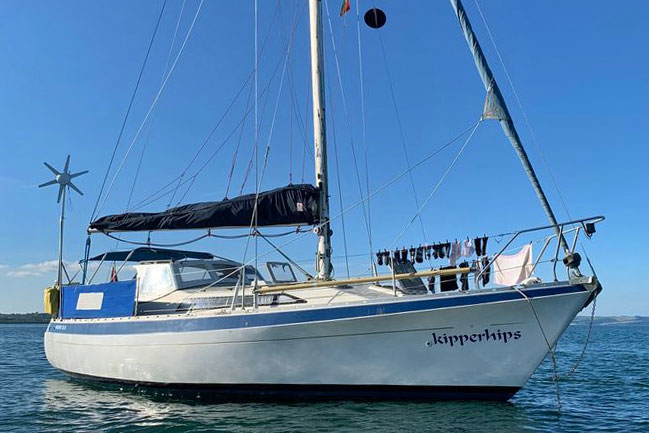 The Moody 33S
The Moody 33SRecent Articles
-
Modern Boat Electronics and the Latest Marine Instruments
Dec 20, 25 05:27 PM
Should sailboat instruments be linked to the latest boat electronics as a fully integrated system, or is it best to leave them as independent units? -
Hans Christian 43: Classic Bluewater Cruiser & Liveaboard Sailboat
Dec 10, 25 04:37 AM
Explore the Hans Christian 43: a legendary heavy-displacement, long-keel sailboat. Read our in-depth review of its specs, design ratios, and suitability for offshore cruising and living aboard. -
Planning Your Sailboat Liveaboard Lifestyle: An Ocean Sailor's Guide
Dec 06, 25 05:18 AM
Seasoned sailors share their methodical risk analysis for planning a secure Sailboat Liveaboard Lifestyle, covering financial, property, and relationship risks.
